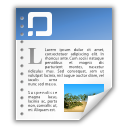Alphabet Soup: Making Sense of Spelling Instruction
Silby, Kristine
:
2012-09-15
Abstract
This essay explores the orthographic discipline of spelling instruction. More specifically, the spelling of English words is examined and the resulting suggestions for implementation and instruction in the classroom are discussed and evaluated. Beginning with a broad sweeping look at the entire field, the opposing theories of “caught” spelling and “taught” spelling are examined and critiqued (Graham et al., 2008; Johnston, 2001). Those who ascribe to a “caught” theory of spelling believe that pure literary exposure will yield capable spellers. In other words, the ability to spell correctly is a skill that can be imitated if a student has enough exposure. On the other hand, many educators believe that simple interaction with literary devices such as books and oral communication does not guarantee an accurate acquisition of spelling knowledge and ability. Rather, the majority of students must receive a multitude of instructional techniques that include exposure, but do not solely rely on it for the means of spelling attainment. Evidence suggests that students must be taught how to spell and not just catch it when reading or writing (Bear & Templeton, 1998; Henderson, 1985; Moats, 2005/2006). Moving forward from this theoretical base, a look will be given to the history of the English language and then the focus will turn towards trends that have shaped spelling instruction. Next, the information presented will gain traction as it is applied to the actual practice of teaching as the implications for curriculum including methods regarding assessment and considerations for adaptations are discussed. Finally, a survey conducted by Carreker, Joshi, and Boulware-Gooden (2010) adds to the literature on teacher preparation and their insights regarding professional development bring depth to the link between teacher knowledge and student achievement.

